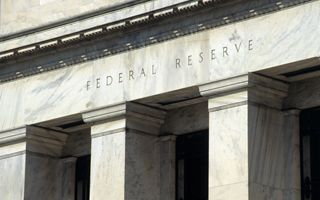(Finance) – The US inflation released this week has far exceeded expectations, pushing the market a drastically re -evaluate the prospect of rates cutswhile previously the president of the Fed had said that there is no need to be in a hurry to change the position of monetary policy. In all this, the potential duties of the new US administration add a risk of rise to inflation in the next quarters. Despite the caution of the Fed, other central banks are proceeding with the cuts of the rates, for a less flourishing economic situation than the US one and for the fears that commercial tensions will have a weight on global growth.
The new data and implications for the Fed
The consumer prices of the United States increased in January 2025 by 0.5% compared to the previous month, pushing theannual increase up to the psychologically demanding threshold of 3%. President Powell liquidated it as a simple number, but in reality an entire series of inflation readings has been recently increased: not in a dramatic way as in the post-plays period, but still in a frustrating and obstinate way.
“You cannot help but notice that it is a heavy report and that, with the feeling that potential customs tariffs involve a rising risk for inflation, the market is understandably of the idea that Federal Reserve will find Difficult to justify rates cuts in the near future“commented James Knightley, Chief International Economist by Ing.
An interesting fact is that last week the markets were serving a probability of 10% of higher interest rates by the end of 2025. On Wednesday, this figure climbed closer to 20%, according to the CME Fedwatch. In addition, inflation expectations are increasing: the survey on consumer confidence of the University of Michigan published last Friday has shown that the expected increase in prices in the next year jumped to 4.3% in February, compared to 3.3 % of January.
The node of the neutral rate
With the major central banks that have cut the rates several times in this cycle, the discussion on the Neutral interest rateor a level of the cost of money that is neither expansive nor restrictive. On February 7, the European Central Bank (ECB) published his expected study on the neutral interest rate, stating that remains in the fork between 1.75% and 2.25%. He communicates it in a study that will be contained in the first economic bulletin of the year. However, the authors of the report stressed that the estimates of the natural interest rate provide complementary information for monetary policy decisions and help communication on the position of monetary policy, but cannot be seen as a mechanical indicator of appropriate monetary policy at any time .
A few days later, on February 12, the resident of the Bundesbank Joachim Nagel He said that the ECB should gradually loosen politics and not aim for a neutral interest rate, as it is difficult to define. Nagel, like many of his colleagues, has minimized the neutral rate, also called “r-star” in the jargon of the central banks, claiming that it is not very useful given the uncertainty about its exact level. “The more we get closer to the neutral rate, the more it becomes appropriate to adopt a gradual approach – he said in a speech in London – the limits of the concept are also clear: it would be risky to base the decisions mainly on R-Star estimates“.
During his awaited hearing at the congress, the president of the Federal Reserve instead said that “the neutral interest rate was very very low before the pandemic, but now I think it is increased significantly“. To a question on the movements of the rates that are observed on the market, Jerome Powell He said: “We cannot control long -term rates, depend on the demand and offer on the bond market. We have some influence, but not so much.”
The other central banks
Thursday 13 February, the Filipino central bank He unexpectedly maintained his key interest rate stable, citing the uncertainties about global commercial policies, but claiming to remain in a locking cycle, with rates cuts of at least 50 base points still likely this year.
Friday 7 February, the Reserve Bank of India He cut his key interest rate for the first time in almost five years, while trying to give a push to a not very brilliant economy and sees inflation slow down towards his 4%goal. In particular, the key rate was decreased by 25 base points to 6.25%, after being unchanged for eleven consecutive political meetings.
Thursday 6 February, the Mexico Bank He lowered his reference rate of 50 basis points, stating that he could cut a similar size in the future as the inflation cools down and after the economy has slightly contracted at the end of last year.
Always on Thursday 6 February, the Bank of England He lowered the reference rate of 25 basis points to 4.50%, as widely expected. At the same time, Boe gave an accommodating turn to its guidance, since two members voted for a broader cut of 50 basis points and lowered their growth projections.
